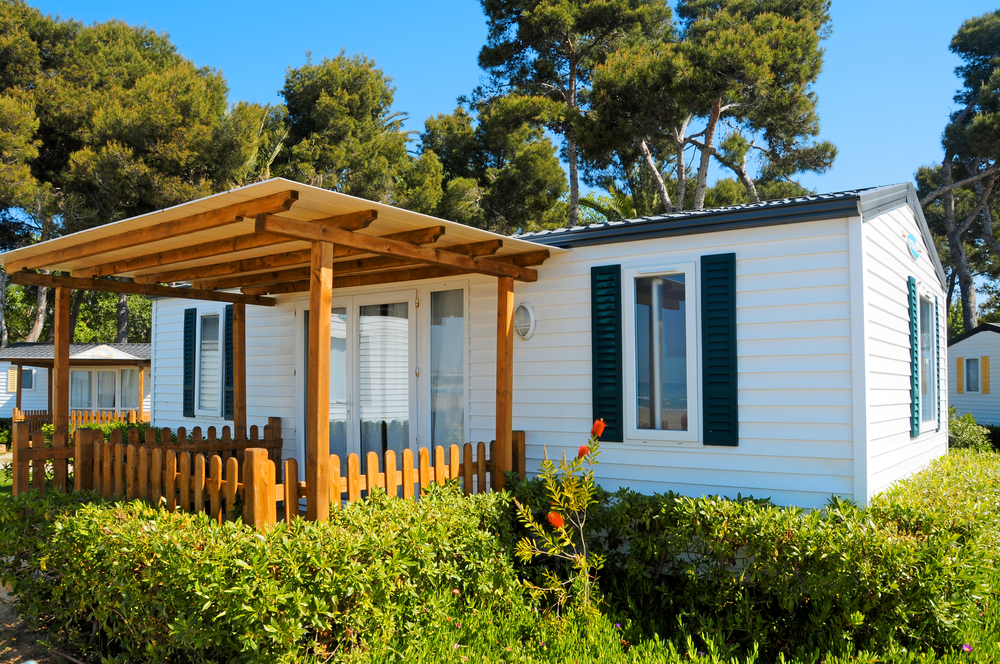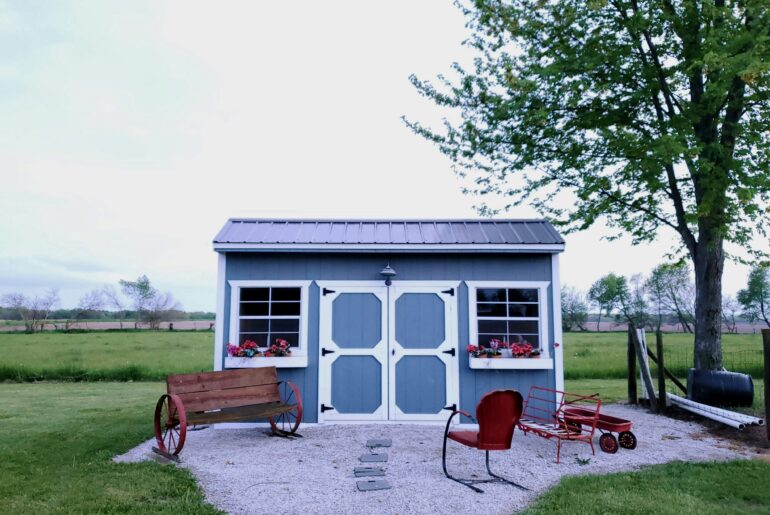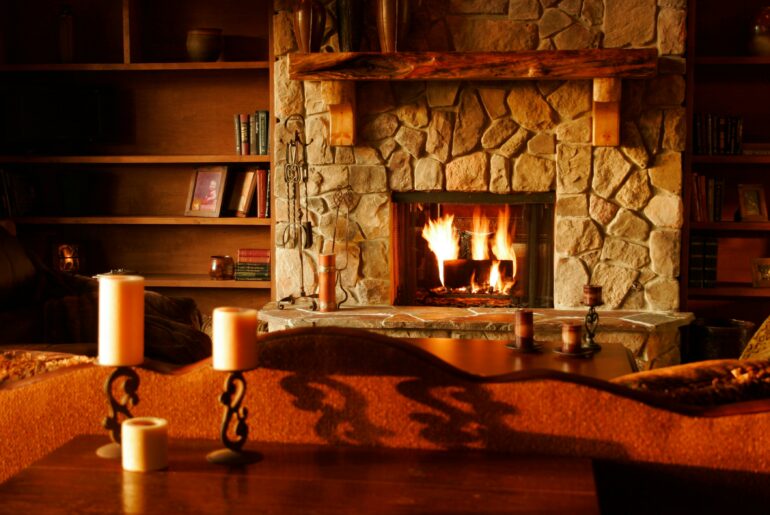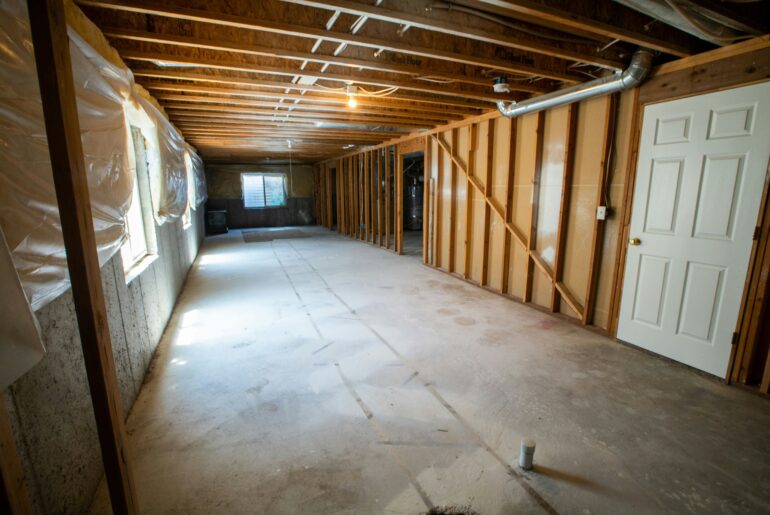Skirting is a vital aspect of any mobile home. Skirting can drastically alter your home’s appearance and lets you customize the outside of your mobile home, but it also acts as a protective barrier. Skirting can help keep heat in and the elements out, so the question remains, should I insulate my mobile home skirting?
Mobile home skirting provides many benefits, from moisture control to lowered energy bills and a drastically reduced pest presence. There are four main types of insulation that you may choose for your mobile home skirting insulation; styrofoam, XPS Insulation Boards, Insulation Foam Rolls, and Foil Insulation.
What is the best insulation for under a mobile home? Are mobile homes insulated? Should I insulate my mobile home skirting in the first place? Of the available options, which is the best type for my mobile home?
Read on for the answers to these questions and more. We have all the information you may need on skirting insulation for mobile homes!
How Skirting Insulation Leads to Less Mobile Home Maintenance?
Home maintenance can be a chore for anybody, regardless of how large your house is. Even mobile homes require a base amount of maintenance.
The question is, can skirt insulation lead to less mobile home maintenance? If so, how much less maintenance do you have to do? What do you still have to work on and what will the skirting take care of for you?
Unfortunately, skirt insulation won’t take care of much inside your mobile home. You will still have to undertake maintenance measures such as dusting and changing your air filter.
Except for moisture control, most of the benefits that skirt insulation provides involve the exterior of your house. These benefits include animal control, temperature control, and a cleaner underside for your mobile home.
Let’s take a closer look at some of the most significant benefits that skirting insulation can have on your maintenance routines.
Moisture Control
Moisture can be a significant issue for any homeowner, especially those in more humid areas. High levels of moisture can corrode metal, rot through wood, and cause damage to the infrastructure under or in your mobile home.
As a (typically) enclosed outdoor area, the underside of your mobile home is likely exposed to the ground. This bare earth is a source of humidity that will build up under your home and congregate as it is trapped by the walls.
Certain types of insulation qualify as vapor barriers. Vapor barriers can prevent anywhere from some to all moisture from passing through.
Thorough application of a vapor barrier can prevent insulation from contacting your mobile home at any level, protecting your home and possessions from the damage that comes with high moisture levels.
Animal Control
Any homeowner knows that pests will find a way to creep into any open place in your home.
If you currently have uninsulated skirts, the odds are high that something is living under your mobile home at this very moment. Your home may be something else’s, too!
Additionally, pests nesting underneath your mobile home may find ways inside your mobile home in a worst-case scenario.
Skirt insulation can help cut down on the need for manual animal control by sealing any gaps under your mobile home, preventing animals from entering the location in the first place.
Properly-applied insulation of any kind will seal the underside of your mobile home, functionally transforming it into an enclosed area.
Unless it is otherwise damaged by outside factors, such as storm debris, mold, or a large and aggressive animal, you won’t have to worry about anything getting under your mobile home.
Less Overall Maintenance
If you haven’t already enclosed the underside of your mobile home, the odds are high that you have to spend some time cleaning under there every week.
You may have to pull weeds or retrieve lost objects from under your mobile home. Adding solid skirts to your mobile home can generally help this issue, but some things may still get through.
Adding insulation to your mobile home skirting can prevent anything from getting through, including plant seeds, sunlight, and soccer balls.
While you still have to do some outdoor maintenance, you don’t need to worry about your mobile home’s undercarriage unless the insulation has taken severe damage.
Reduced Energy Bills
Everybody wants to find new ways to save a few dollars on their home. After all, nobody likes paying bills!
Your mobile home’s manufacturer may have already included some level of insulation, and you may have added insulation to any porch or sunroom that you constructed afterward to reduce the cost of your energy bills.
However, did you know that insulating under your mobile home can help reduce energy bills similarly to other insulation forms?
Insulated skirting can help retain warm air in the winter and cool air in the summer by maintaining the temperature of your mobile home’s undercarriage.
As insulation maintains the climate under your mobile home, your air conditioning units won’t have to work as hard to control the temperature of your interior. Not only does this reduce the cost of your energy bill, but your home will feel far more comfortable, as well.
Types of Insulation For Mobile Home Skirting
There are many benefits to insulating the skirts of your mobile home, from less maintenance to reduced energy bills. However, there are some more things to consider before you decide to insulate your skirts.
For example, there are several available methods you may choose to insulate the skirts of your mobile home. You can largely use the same materials that you would use to insulate any other humid area, such as a basement or under a patio.
However, we recommend four materials for insulating your skirts. These materials are styrofoam, XPS insulation boards, insulation foam rolls, and foil insulation.
Each of these materials has unique benefits, installation processes, and costs. For example, none of these materials have the same r-value, which is a measurement of how efficient each material is at retaining heat.
Read on to learn which material may work best for your needs.
Styrofoam
Styrofoam is a trade name for a material known as expanded polystyrene.
You might know styrofoam from your arts and crafts projects as a child, but expanded polystyrene, or EPS for short, is a surprisingly efficient insulator.
Styrofoam consists of 98% trapped air, giving it an efficient insulating quality for significantly less material than other competitors.
On average, styrofoam has an r-value of 3.6 per inch, which puts it in a lower bracket than the otherwise-similar XPS.
However, styrofoam features an advantage over other types of insulation in that its r-value does not decrease over time.
Installing styrofoam is quick and easy; you can easily install it yourself if you pay attention. With a cost varying between $0.25 and $1.40, it is also notoriously cost-efficient.
To install styrofoam insulation, apply a polystyrene-friendly adhesive to each panel and arrange them to fit snugly behind the skirting of your mobile home.
XPS Insulation Boards
While styrofoam is expanded polystyrene, XPS is extruded polystyrene. Despite the similarity in names, there are notable differences between the two insulating materials.
XPS features an R-value of 4.7 per inch, with some high-density varieties reaching R-values of 5.2 per inch. Additionally, XPS is a better vapor barrier than EPS, with a water vapor diffusion resistance of 80-250 against styrofoam’s 30-70.
Due to its superior capabilities, XPS commands a higher cost than styrofoam, with its price ranging from $1.80 to $3.20 per square foot.
However, installation for XPS is similar to that of styrofoam. Apply a polystyrene-friendly adhesive to the edges of each panel and fit them together behind your mobile home’s skirting.
Insulation Foam Roll
Polyethelene may be another similar name to polystyrene, but these two forms of foam are very different.
Insulation foam rolls will feature a foam such as polyethylene, which has an R-value of 3.7 per inch and cost around $250 for a 550-foot roll.
To install a polyethylene insulation foam roll, you will need something to support the foam. Thankfully, any posts currently supporting your home or your skirts will do just fine.
Unroll the foam along the length of your mobile home’s skirts and fasten as desired. Some homeowners opt to utilize specialized insulation-supporting wires while others may simply choose staples.
Alternatively, you may use a polyethylene-friendly adhesive to the foam to help fasten it to its supporting structure.
Foil Insulation
Foil insulation may not be as common as foam insulation, but when it comes to insulating mobile home skirts, it is a forerunner.
Foil insulations vary wildly in properties and quality. For example, some may have an R-value as low as R-3 to as high as R-17.
Foil insulation is also relatively cheap, costing anywhere from $1.00 to $2.22 per square foot in a roll.
As foil is not a permeable substance, it is an excellent vapor barrier; however, you must ensure that it does not suffer any significant damage, as it can tear easily.
Installing foil insulation is easy. Simply unroll the rafters along your skirting and fasten it to any available surface via staple.
Is Insulated Skirting Worth the Investment?
One of the things that worries many homeowners is the initial investment cost of insulated skirting.
Even if you choose to install it yourself rather than hiring a professional, you may have to pay a sizable fee for materials.
Ultimately, the value of insulated skirting is up to your economic values.
However, keep in mind that insulated skirting can protect your home from several causes of damage along with lowering your energy bill cost.
With a lower energy bill, your insulation will pay itself off in a matter of months. In financial terms, insulated skirting may be the right move for your home and your wallet!
What to Watch Out For
Unfortunately, insulation is not a perfect process. While insulation can protect your home from the elements, your insulating materials may be vulnerable to other things.
For example, foil insulation is vulnerable to debris or sharp objects. You must periodically ensure that your foil insulation has not suffered any damage and is still performing optimally.
On the other hand, foam insulation is particularly susceptible to mold. While they act as sufficient vapor barriers, large amounts of stagnant water can lead to mold growth, which will weaken and decay your insulation.
You should also keep an eye out for any signs of inclement weather. Large rainstorms can cause harmful pools of water, while high winds can damage your insulation or outright tear it off of your home.





